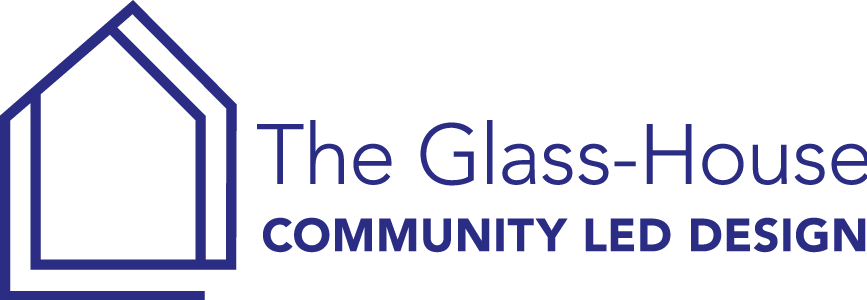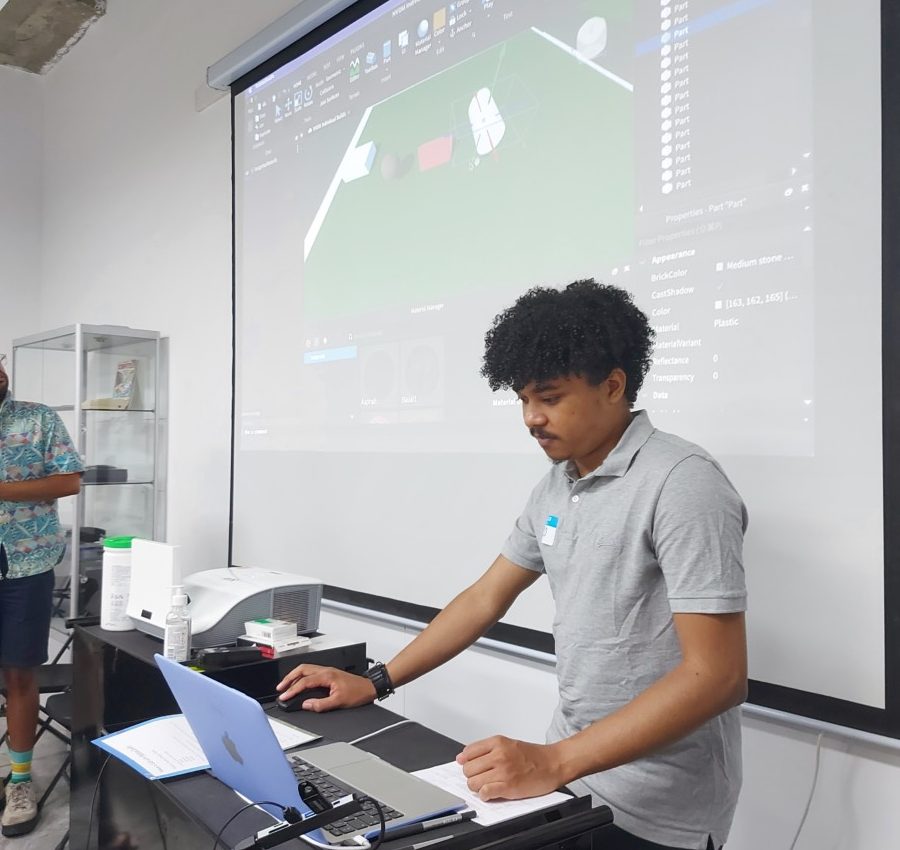Written by:
Enrico shares his journey on the TAP programme internship that he has spent with The Glass-House over the summer and his collaboration on the further development of our gaming workshop model, which we tested at the National Videogame Museum in Sheffield.
I am Enrico, a Final year Japanese studies student at the University of Sheffield. I was one of the 140 students from under-represented backgrounds selected to participate in the Transforming and Activating Places programme, aka the TAP programme.

I remember when I first received an email from the Arts and Humanities department. The email shared that there was a chance to apply for a summer internship organised by the TAP programme. I did not think much of it at the time, as I was very preoccupied with my dissertation research and studying for my final assessments. But after receiving an email about the program submission deadline being in a few days, I decided to fill out the form and hoped for the best, and continued with my studies. Then, a few weeks later, I received the confirmation email congratulating me for being selected to participate in the programme as TAP Student and get paired with a TAP Partner Org. I was excited to get in because I did not think I would get accepted, as I had left my submission until the very last day. The reason was that I felt uncertain about the future, significantly after my studies had been disrupted by the whole lockdown situation of the previous two years. So I was unsure about committing to something only to have it disrupted again.
Once we had the opportunity to read through each partner organisation’s project ideas for the internship, I settled on various partners, with The Glass-House at the top of my list because their project about a gaming workshop seemed most interesting to me. I am an avid gamer, and I felt I could bring a different perspective because I did not grow up in the UK. My family and I moved to the Uk When I was 18, and as an introvert, I struggled to make new friends and meet new people, but once I got my gaming console, I felt like I had found my place in gaming and have made many friends through it.
I mention all this to say that I believe in the ability to connect with people through gaming regardless of age, gender or race. The mission statement of both TAP and The Glass-House is about connecting people and bringing our skills and knowledge together into a shared knowledge exchange.
Before we got told which partner organisation we would be paired with, we all took part in various informative and important seminars that helped prepare us for the internship. I feel like I learned a lot from them, especially about Placemaking, a term I was unfamiliar with. However, now my understanding of Placemaking is that “It is about understanding what makes a certain space a ‘Place’ and how we ‘Use’,’Feel’ and ‘ Connect’ with that space. It is also about how we can improve the place in terms of overall attractiveness to everyone (all ages, races and genders) and the value it brings to the people in the space.
After getting paired with The Glass-House and exchanging a few introductory emails, I was relieved to learn they had taken two TAP students (I was a little anxious to do it alone). We introduced ourselves and arranged with The Glass-House team to visit their offices in London for an induction session to meet them and learn more about the project. During our visit, we felt very welcomed and learned about the team, previous projects, and how this internship would work. I was glad they were flexible with the dates and timings and were open to new ideas. I remember being so excited to work on this as it differed from my university work. Still, I had worked in engineering before university and was looking forward to using my knowledge and how it would work in this project.

Next, we had a general planning meeting where we went over the project brief through Miro boards and were given some objectives to work towards, such as using the Miro boards and getting to know Roblox Studio for the first time. This was also a chance for the other TAP student Vince and I, to get to know each other and figure out how to work together based on what we felt more confident in doing. I liked the work plan we used because it gave us various checkpoints throughout the internship that each built on the previous one and eventually led to the gaming workshop and beyond.
For our next set of objectives, we had to research and map out the current landscape of educational gaming platforms such as Roblox Education and Minecraft Education,e.t.c. We looked into existing programs, how they worked, and the recommended hardware specifications to run Roblox Studio. We also settled on the context for the programme and looked at topics around the idea of State of Play: how we used to play (parents) and how we play now (kids).
We looked at the bigger picture and designed a programme narrative for the workshop model that could be replicated by others and would work as a summer camp version of the gaming workshop that would run over a few days during the summer holidays. We then tested the ideas with the two young facilitators, Dexter and Isabella, who had helped with the previous Glass-House gaming workshops. They gave us helpful feedback on our ideas, and we worked on improving them based on their input. At the same time, The Glass-House team had made contact with the National Video Museum based in Sheffield. We hoped to use a designated space within the Museum to run the new and improved gaming workshop.

Before we knew it, July had come, and we had been working on the more extensive programme narrative and implementing the suggestions by the young facilitators. The following first meeting in July was an opportunity to show our progress and ideas to Elly Mead, a member of The Glass-House team who had not been a part of the process thus far, she could provide a new and fresh perspective on our ideas and make suggestions for improvement. We then took all the latest feedback and worked on refining our programme outline.
We had planned to run the workshop early in the following month of August. So the next step was for me and Vince to work on developing an outline for the full-day gaming workshop. Again, we used the information from the previous workshops and tried to make our improvements and changes. Sophia’s meeting with the Museum had been very hopeful, but we needed to find out if the hardware (laptops, Wifi, etc.) and space at the Museum would be appropriate for the workshop we had planned. So, Vince and I were tasked with visiting the Museum to test the equipment and workspace. We successfully tested the available laptops and Wifi, and both agreed that it would be appropriate to run the workshop. So with the venue locked in, the workshop development was full steam ahead.
This would be an opportunity to go bigger and try something different from the previous workshops. The most significant change was that we were designing it to be a workshop that includes the parent/guardian’s participation, which was not a part of the previous workshops. In addition, an unexpected coincidence was the fact that the Museum’s theme for August was about playing together. So we used the Miro boards to collaborate and figure out the day’s content and timing.
Vince and I delegated the work between us, and each worked on a different aspect of the workshop. I decided to work in the Roblox studio (team build) environment, and Vince would work on the virtual tour. We had one last in-person meeting with The Glass-House team in their London offices and we used this opportunity to review the itinerary for the day and make some finishing touches to everything, ensuring that the Roblox environment worked as intended.

It was finally the workshop day, and we got to the Museum one hour before the start to set up the laptops and organise the space appropriately. After all this time, I felt anxious but excited to deliver the gaming workshop. We had kept the format of the previous workshop. For the morning session, there would be an individual build stage in which the parents and children would be working separately, with the parents at one table with arts and crafts and the children at other tables with laptops. While the children created their ideal play space in Roblox Studio, the parents used arts and crafts to talk about and represent the places where they played as children. . Once we had started the workshop and got into the swing of things, all my anxiety faded, and I just enjoyed working on helping anyone that needed assistance with their builds. We had a show-and-tell segment, looked at everyone’s builds and drawings, and discussed them. Then everyone took a break for lunch.

Then for the afternoon session, we had the parents and children all work together in four colour co-ordinated teams to co-design their team’s ideal play space based on their build location within the Roblox cityscape. I was impressed with how well they all worked together because they were all strangers at the beginning of the workshop. I was also delighted that it had all gone to plan with no hardware issues throughout the day.
The following week we had a meeting to debrief, discuss the workshop and plans for the future, and celebrate the successful day.
Overall, my role as a facilitator was new and refreshing and taught me a lot about what goes into running a successful workshop. The Glass-House team has been very welcoming and a pleasure to work with, and I know that I will miss working with them, but I will keep up with their future endeavours from now onwards. I think that we all learned something from each other, and I feel like I was able to be a part of something bigger that has a lot of future potential.
We shall be sharing Vince’s blog and journey through this internship programme next week. To read a little more about The State of Play Workshop, please follow this link here.

